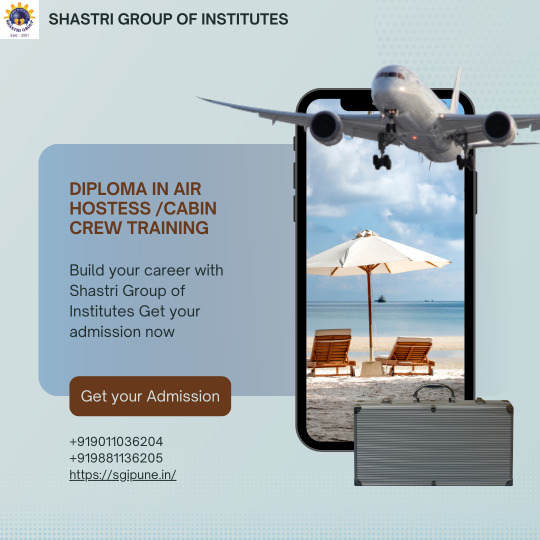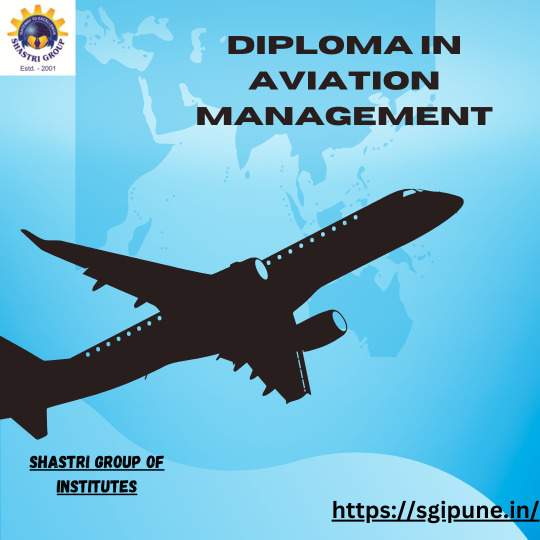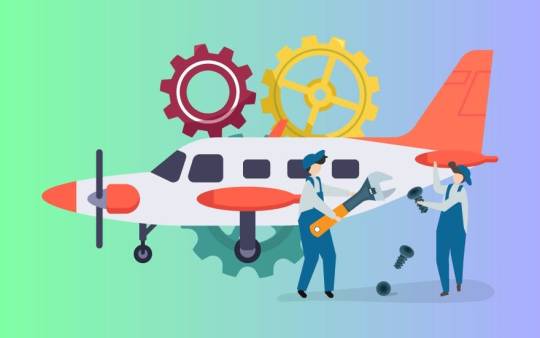#Aircraft Maintenance Engineering
Explore tagged Tumblr posts
Link

#aircraft maintenance engineer india#aircraft maintenance engineering#ame courses#AME college#igeSAME#igesame.com#ame india#aircraft maintenance engineering ame#ame in india#ame college in india
8 notes
·
View notes
Link
An insight into Cabin crew courses after 12th. Get your seats from the best cabin crew training institute and achieve your dream.
#air hostess#air hostess courses#air hostess courses after 12th#aircraft maintenance engineering#aircraft maintenance engineering colleges#airhostess#ame#aviation#aviation academy#aviation academy in india#best air hostess institute in kerala#cabin crew#cabin crew courses#cabin crew courses after 12th#cabin crew training institute#cabincrew#cabincrewcollege#cabincrewlife#crewlife#flightattendant#flightattendantlife#stewardess
3 notes
·
View notes
Text
AME Course Details - FIAME

Aircraft Maintenance Engineering (AME) is a specialized field focused on ensuring the safety and airworthiness of aircraft through meticulous inspection, repair, and maintenance procedures. Approved by the Directorate General of Civil Aviation (DGCA), India, this course equips students with the skills and knowledge required to maintain various types of aircraft. Below are the key details of an Aircraft Maintenance Engineering course:
2 notes
·
View notes
Text

Shastri Group of Institutes
#AME#cabin crew#air hostess course#aviation course#aircraft maintenance engineering#ame courses#ame colleges in india
2 notes
·
View notes
Text

AME Institute in India | Hindustan Aerospace Engineering
#aeronautical maintenance engineering#aircraft maintenance engineering#ame course in india#ame course in pune#ame course with degree#AME course DGCA approved#top 10 ame colleges in India#best ame colleges in india
1 note
·
View note
Text
There’s so much variety in aircraft maintenance, sometimes I’m using a computer to check settings of stuff, sometimes I’m running through a troubleshooting table and today I taped a bag of desiccant to the bottom of a plane
1 note
·
View note
Text
Pro Tips for Aircraft Maintenance with the Wadeti BF1000C Kit
Aircraft maintenance is a critical aspect of ensuring safety, performance, and longevity. The Wadeti BF1000C Aircraft Cleaning Kit is designed to help you keep your aircraft in top condition. Here are some pro tips to maximize the effectiveness of your maintenance routine using this comprehensive cleaning kit.
1. Establish a Regular Cleaning Schedule
Consistent cleaning is vital for aircraft maintenance. Dirt, grime, and environmental pollutants can accumulate quickly, leading to potential damage if not addressed promptly. Create a regular cleaning schedule and stick to it, ensuring that your aircraft remains in pristine condition.
2. Use the Right Tools for Each Task
The Wadeti BF1000C Kit comes with a variety of specialized tools designed for different cleaning tasks. Familiarize yourself with each component and its specific use. For instance, use soft brushes for delicate surfaces and microfiber cloths for polishing. Avoid using harsh or abrasive materials that could damage your aircraft's surfaces.
3. Focus on Key Areas
Certain areas of your aircraft require more attention due to their exposure to dirt and wear. Pay extra attention to the following:
Landing Gear: Clean and inspect for any signs of wear or damage.
Wings and Tail: Remove any debris and check for structural integrity.
Cockpit: Ensure all controls, displays, and seats are thoroughly cleaned and sanitized.
4. Inspect While You Clean
Cleaning provides an excellent opportunity to inspect your aircraft for any potential issues. Look for signs of corrosion, cracks, or other abnormalities. Early detection of problems can save you time and money on more extensive repairs down the line.
5. Use Quality Cleaning Solutions
The cleaning solutions included in the Wadeti BF1000C Kit are specifically formulated for aircraft surfaces. Always use these recommended products to avoid any potential chemical reactions or damage. Ensure you follow the manufacturer's instructions for the best results. For quality cleaning you can also use WADET1000C and WAD101.
6. Protect Your Aircraft Post-Cleaning
After cleaning, consider applying protective coatings to key areas of your aircraft. These coatings can provide an additional layer of defense against environmental elements, reducing the frequency of required cleanings and prolonging the life of your aircraft.
7. Keep Your Kit Well-Maintained
Your cleaning kit itself needs maintenance to remain effective. Clean the tools after each use and store them properly. Replace any worn-out components to ensure you're always working with optimal equipment.
8. Stay Informed About Best Practices
Aircraft maintenance is an ever-evolving field, with new techniques and products constantly emerging. Stay updated with the latest best practices and integrate them into your routine. Join aviation maintenance forums, read industry publications, and attend relevant workshops or seminars.
9. Document Your Maintenance Activities
Keep a detailed log of all cleaning and maintenance activities performed on your aircraft. This documentation is essential for tracking the condition of your aircraft over time and is often required for regulatory compliance and resale purposes.
10. Seek Professional Help When Needed
While the Wadeti BF1000C Kit is an excellent tool for regular maintenance, some tasks require professional expertise. Don't hesitate to seek help from certified aircraft maintenance professionals for more complex issues or annual inspections.
Conclusion
Maintaining your aircraft with the Wadeti BF1000C Cleaning Kit is a smart investment in its longevity and performance. By following these pro tips, you can ensure that your aircraft remains in excellent condition, providing safe and reliable flights for years to come. Regular, thorough cleaning combined with diligent inspection and maintenance practices will keep your aircraft looking and performing at its best.
1 note
·
View note
Text
Know more about B.tech aeronautical engineering course, Entrance Exams, and difference between btech aircraft maintenance engineering and aeronautical engineering. choose the best option from the Aviation academy in India.

#aircraft maintenance engineering#aviation#aircraftmaintenance#aviation academy in kerala#ame colleges#ame colleges in kerala#aviation academy in india#air hostess courses after 12th#aviation academy#air hostess course#airbus#aircraft#airlines#airport#airplane#aircraftmechanic#aircrafts#aviationdaily#aviationlovers#aviationmaintenance#aviationphotography#aeroplanes#best colleges for aeronautical engineering#b tech aeronautical engineering#aeronautical#aerospace#aeroplane#aeronautical engineering#aeronautica militare
2 notes
·
View notes
Text
#aviation course#aviation course in trivandrum#Aircraft Maintenance Engineering#Aircraft Maintenance Engineering in Trivandrum
1 note
·
View note
Text

Shastri Group of Institutes - Directing Your Route to Excellence in Diploma in Aviation Management
#AME#cabin crew#air hostess course#aviation course#aircraft maintenance engineering#ame courses#ame colleges in india
1 note
·
View note
Text
Aircraft Solutions: Unmatched Aircraft Services by Sentinel Aerospace
"Aircraft Solutions" by Sentinel Aerospace represents a pinnacle in aircraft services, where excellence meets efficiency. With a commitment to precision and safety, we offer unparalleled solutions tailored to meet the diverse needs of the aviation industry. From comprehensive maintenance and repairs to innovative upgrades and modifications, our team of experts ensures that every aircraft entrusted to us receives the highest standard of care. Whether it's routine inspections or complex overhauls, we deliver with unwavering dedication and expertise, ensuring optimal performance and reliability for every flight. With Aircraft Solutions, experience the assurance of unmatched aircraft services that elevate your journey to new heights, backed by the trusted reputation of Sentinel Aerospace.
1 note
·
View note
Text
Is Aircraft Maintenance Engineer A Good Career In India?

Introduction:
Are you someone fascinated by airplanes and the magic of flight? If so, a career as an Aircraft Maintenance Engineer (AME) in India might just be the perfect runway for your dreams. In this blog, we'll explore why becoming an AME is a fantastic career choice, covering the scope, qualifications, and eligibility criteria for this exciting profession.
1. Understanding Aircraft Maintenance Engineering:
Aircraft Maintenance Engineers are the unsung heroes of the aviation world. They ensure that airplanes stay safe, efficient, and ready to take to the skies. Their work involves inspecting, repairing, and maintaining aircraft to meet strict safety standards.
2. Scope of Aircraft Maintenance Engineering:
The scope for AMEs in India is soaring higher than ever. With the country's aviation sector witnessing substantial growth, there's a constant need for skilled professionals to keep the expanding fleet of aircraft in top-notch condition. AMEs play a critical role in ensuring that planes are airworthy and passengers can fly safely.
3. Qualifications for Aircraft Maintenance Engineering:
To become an Aircraft Maintenance Engineer in India, you typically need to pursue a recognized Aircraft Maintenance Engineering course from a DGCA (Directorate General of Civil Aviation) approved institute. The course generally includes theoretical and practical training in various aspects of aircraft maintenance.
4. Eligibility Criteria for AME:
The eligibility criteria for aspiring AMEs usually include:
- Successful completion of 10+2 with Physics, Chemistry, and Mathematics.
- Admission to a DGCA-approved AME training institute.
- Clearing the Aircraft Maintenance Engineering Common Entrance Exam (AME CEE) or other relevant entrance exams.
5. Thriving Aviation Industry:
India's aviation industry is growing rapidly, making the demand for skilled AMEs higher than ever before. Airlines, maintenance organizations, and defence sectors are actively seeking qualified professionals to ensure the airworthiness of their fleets.
6. Job Opportunities and Job Security:
Upon completing the AME course, a plethora of job opportunities awaits. AMEs can find employment in commercial airlines, defence organizations, and maintenance and repair facilities. The aviation industry's commitment to safety ensures job security for qualified and experienced professionals.
Conclusion:
In conclusion, pursuing a career as an Aircraft Maintenance Engineer in India is a decision that can lead you to great heights. The ever-expanding aviation sector, coupled with the country's focus on safety and airworthiness, creates a promising landscape for those passionate about aircraft. If you have a knack for fixing things and a love for aviation, consider the exciting journey of becoming an Aircraft Maintenance Engineer and contribute to the seamless functioning of India's skies. So, gear up, because the sky's the limit!
1 note
·
View note
Text
#aeronautical maintenance engineering#aircraft maintenance engineering#ame course in india#ame course in pune#ame course with degree#AME course DGCA approved#top 10 ame colleges in India
1 note
·
View note
Text
#aircraft maintenance engineering#aircraft maintenance engineering admission#ame courses#ame colleges
1 note
·
View note
Text
Wingsss College of Aviation Technology: Leading the Way in Aircraft Maintenance Engineering Education in Pune
In the fast-paced aviation industry, skilled professionals play a crucial role in ensuring the safety and maintenance of aircraft. For aspiring aviation enthusiasts in Pune, Wingsss College of Aviation Technology stands as a premier institution offering comprehensive courses in Aircraft Maintenance Engineering (AME). With a commitment to excellence and a focus on practical training, Wingsss College has emerged as a trusted name among Aircraft Maintenance Engineering colleges in Pune and across India. 1. Aircraft Maintenance Engineering Colleges in Pune: When it comes to pursuing a career in Aircraft Maintenance Engineering, choosing the right college is of utmost importance. Wingsss College of Aviation Technology, located in Pune, has established itself as a leading institution in this field. With state-of-the-art facilities, experienced faculty, and a strong emphasis on hands-on training, Wingsss College provides students with the ideal learning environment to acquire the skills and knowledge required to excel in the aviation industry. 2. BSc Aircraft Maintenance Engineering Courses in Pune: Wingsss College of Aviation Technology offers a comprehensive Bachelor of Science (BSc) program in Aircraft Maintenance Engineering. This course is designed to provide students with a strong foundation in aviation technology, aircraft systems, maintenance procedures, and regulatory guidelines. The curriculum is carefully crafted to strike a balance between theoretical knowledge and practical training, enabling students to develop the necessary skills to inspect, troubleshoot, and maintain aircraft. 3. AME Colleges in India: While there are numerous AME colleges across India, Wingsss College of Aviation Technology stands out for its commitment to quality education and industry-focused training. The college has gained recognition for its strong industry connections, which facilitate internships, workshops, and guest lectures by industry experts. Students at Wingsss College are exposed to real-world scenarios, ensuring that they are well-prepared to handle the challenges of the aviation industry upon graduation. 4. AME Colleges in Pune: In Pune, a city known for its educational institutions, Wingsss College of Aviation Technology has carved a niche for itself as one of the top AME colleges. With its modern infrastructure, well-equipped laboratories, and dedicated faculty, the college offers students an immersive learning experience. The curriculum at Wingsss College aligns with the guidelines set by the Directorate General of Civil Aviation (DGCA), ensuring that students receive industry-relevant training and education. Conclusion: Choosing the right college is crucial for aspiring Aircraft Maintenance Engineering professionals. Wingsss College of Aviation Technology, Pune, has proven to be a trusted institution, known for its commitment to providing quality education and industry-focused training. With its BSc program in Aircraft Maintenance Engineering, state-of-the-art facilities, and strong industry connections, Wingsss College equips students with the skills and knowledge needed to excel in the aviation industry. By choosing Wingsss College, students take a significant step towards a rewarding and successful career in Aircraft Maintenance Engineering.
Contact us:+91-99225 08671 To learn more visit the website: https://wcat.in/
1 note
·
View note
Text
Navigating the Skies: Exploring the World of Avionics Engineering, Aircraft Maintenance, Aviation Management, and Cabin Crew
Welcome to our aviation-focused blog, where we delve into the fascinating realm of aviation and its various aspects. In this article, we will explore the dynamic fields of Avionics Engineering, Aircraft Maintenance Engineering, Aviation Management, and the exciting world of Cabin Crew and Airhostesses. Join us as we soar through the skies of knowledge and discover the intricacies of these remarkable professions.
1. Avionics Engineering:
Avionics Engineering plays a crucial role in the development and maintenance of modern aircraft. In this section, we will discuss the fundamentals of avionics, the integration of electronics and communication systems in aircraft, and the advancements that are shaping the future of this field. Explore the latest technologies, navigation systems, flight control systems, and communication tools that make flying safer and more efficient.
2. Aircraft Maintenance Engineering:
Behind every successful flight lies the dedicated work of Aircraft Maintenance Engineers. In this section, we will uncover the vital responsibilities of these professionals, including the inspection, repair, and maintenance of aircraft systems. Learn about the various components that require regular checks, the importance of adhering to safety regulations, and the career opportunities available in this field.
3. Aviation Management:
Aviation Management is the backbone of the aviation industry, encompassing a wide range of activities required to ensure smooth and efficient operations. In this segment, we will explore the managerial aspects of the aviation industry, including airport operations, airline management, air traffic control, and aviation safety. Gain insights into the skills and knowledge necessary to excel in aviation management and discover the challenges and rewards of this exciting career path.
4. Cabin Crew/Airhostess:
The role of Cabin Crew and Airhostesses goes far beyond serving refreshments. In this section, we will uncover the glamorous and demanding world of cabin crew professionals. From ensuring passenger safety and comfort to delivering exceptional customer service, we will explore the training, skills, and qualities that make a successful cabin crew member. Discover the perks, challenges, and lifestyle associated with this fascinating career.
Conclusion:
Aviation is a captivating field that encompasses a myriad of professions, each playing a vital role in ensuring the safety, efficiency, and comfort of air travel. Whether you are interested in avionics engineering, aircraft maintenance, aviation management, or the glamorous life of cabin crew, this blog serves as a gateway to understanding these fascinating careers. We hope that our articles inspire you to explore further, pursue your dreams, and embark on an exciting journey in the world of aviation. Safe travels!
#aircraft#aviation#aerospace#aircraft maintenance engineering#cabincrew#air hostess#aerospace engineering
1 note
·
View note